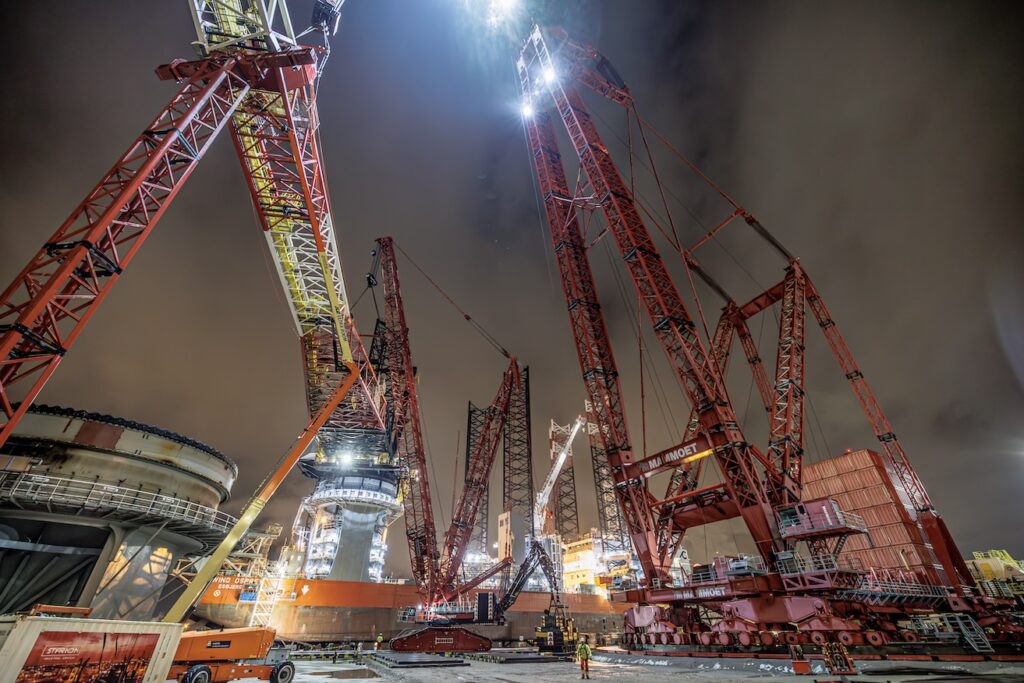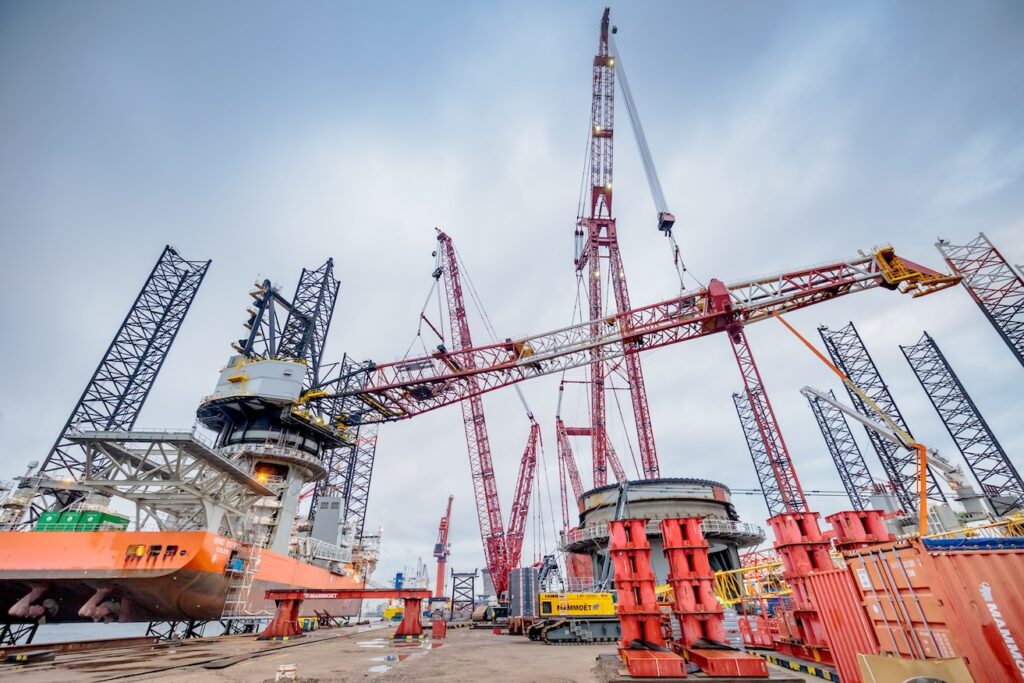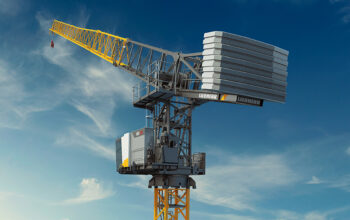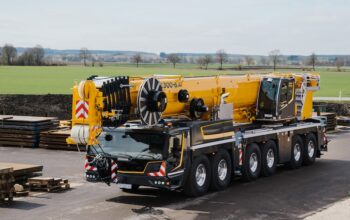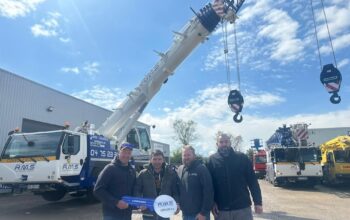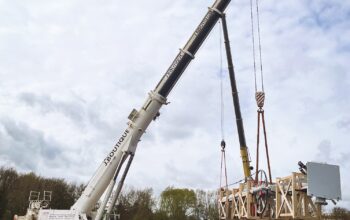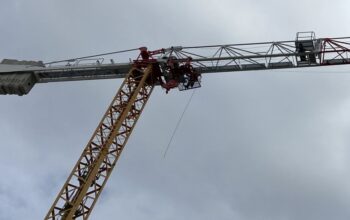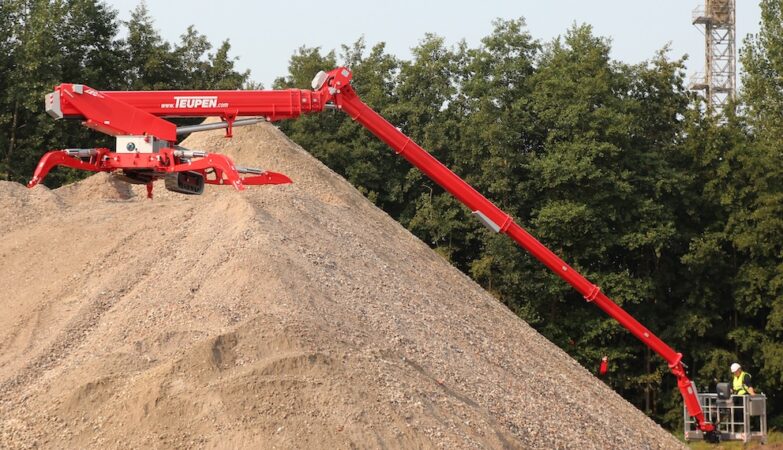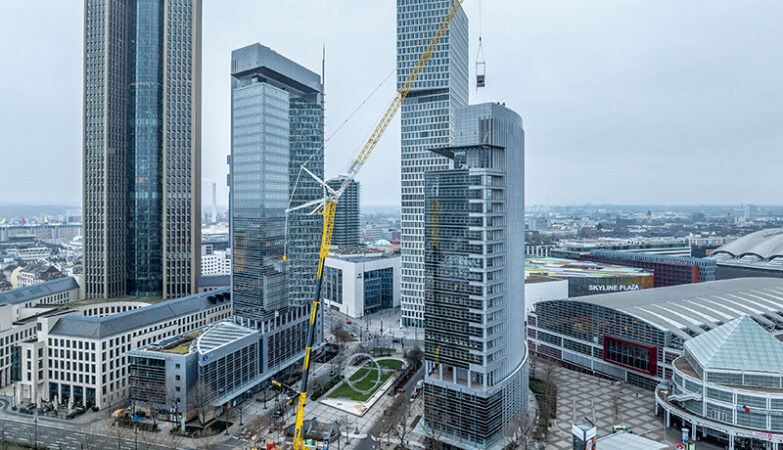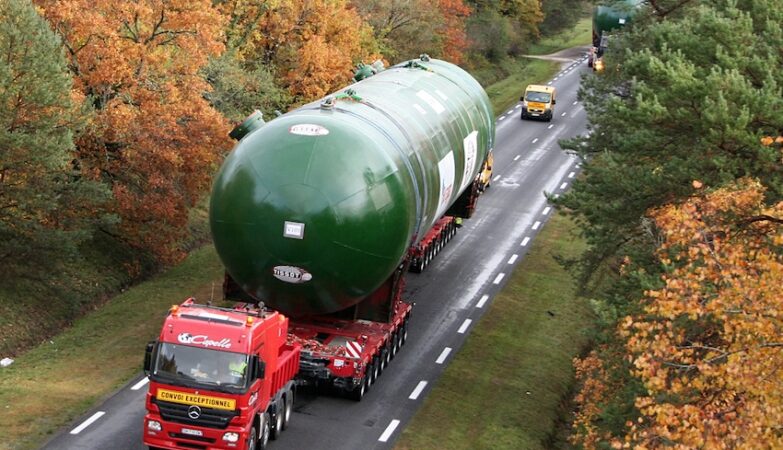Mammoet replaces the offshore cranes on two offshore wind turbine installation vessels, using its gigantic PTC210-DS crane in the 5,000-ton class.
Wind turbines are getting bigger and heavier, especially in offshore wind farms... so the wind industry's new requirements call for state-of-the-art lifting equipment for their installation. The Mammoet Group was approached by GustoMSC for a major project to replace the marine cranes on two offshore wind farm installation vessels, Wind Orca and Wind Osprey, for the Danish transport company Cadeler. The new marine cranes to be installed are fully electric and have a lifting capacity of 1,600 tonnes, enabling them to install and maintain new-generation wind turbines with capacities exceeding 14 MW.
Unique project
This unique lifting project was carried out using Mammoet's PTC210-DS crane. It is one of five rotating crown cranes in the 5,000-ton class in the Mammoet fleet, and one of the largest in the world.
This was a unique opportunity for the Mammoet Group not only to use one of the largest cranes in its fleet, but also to do so at its own shipyard in Schiedam (on the port of Rotterdam).
" The PTC210-DS is the perfect crane for the job. It has a relatively small footprint combined with 360-degree rotation, with the ability to switch between fixed and moving jib mode (as only PTCs can do), resulting in the largest possible working area," explains Dirk Knoester, Senior Consultant at Mammoet.
With the installation vessels positioned on either side of the Mammoet quay, the PTC210-DS could be positioned centrally, inserted between the two vessels, and able to operate on both at the same time. "Not only does this save considerable time, by minimizing the movements of cranes in the shipyard and vessels along the quay, but it also creates the safest possible solution for completing this project."
The Wind Orca and Wind Osprey vessels were moored on either side of the quay. Assembling the crane at the Mammoet shipyard in Schiedam optimized the schedule and increased safety for the project. Extensive safety assessments were carried out, and load tests performed to ensure ground stability.
Tandem
The new marine cranes consist of four main sections: the pedestal, the rotating platform, the A-frame and the 149-meter main boom. To improve stability and control during main boom lifts, an LR1800-1.0 crawler crane was used as an assist crane. Working in tandem, the PTC210-DS lifted one end of the boom while the crawler crane lifted the other. The lifting height was also a test for the engineers. At various stages of the operation, the ships had to be raised to a height of 73 meters above the quay using their jacking systems. This was necessary to position the new cranes.
Operations on both vessels are continuing and should be completed in the next few months.
